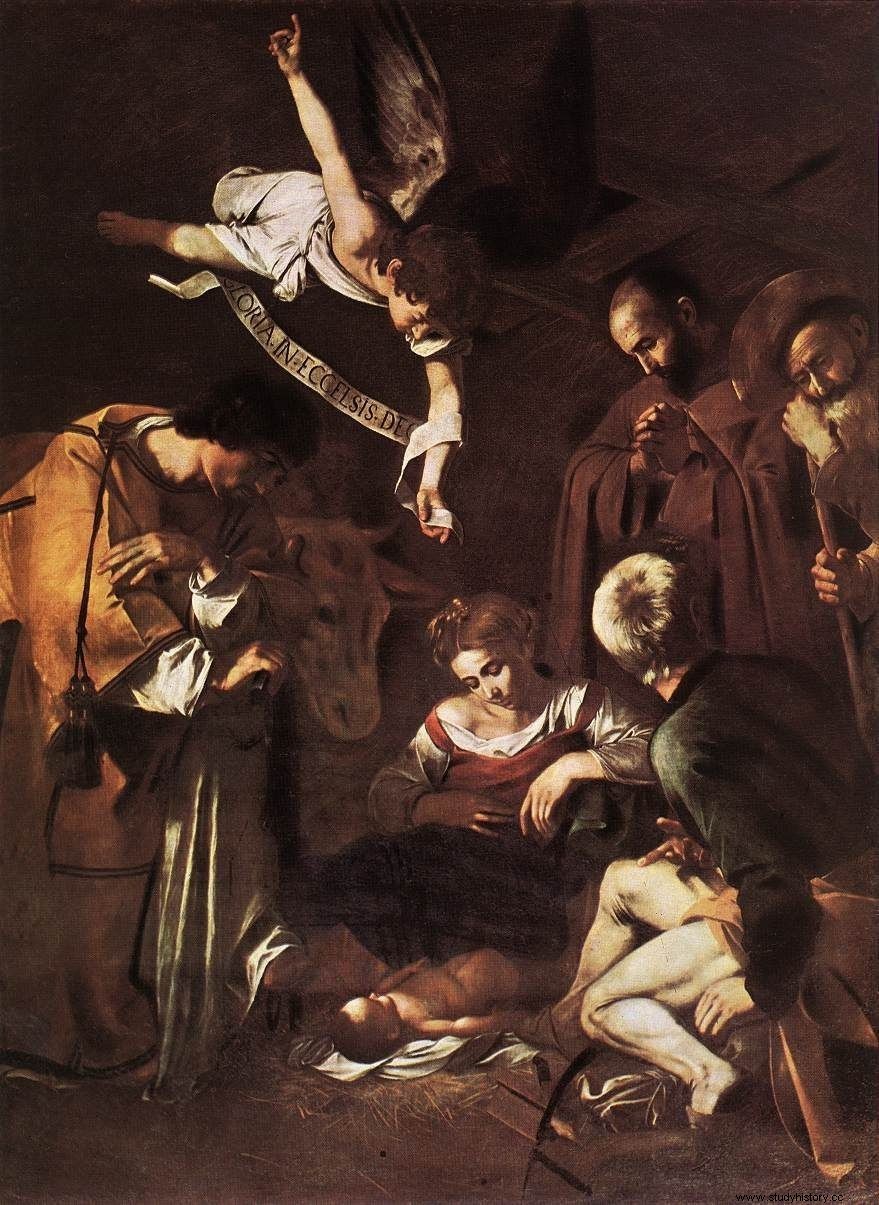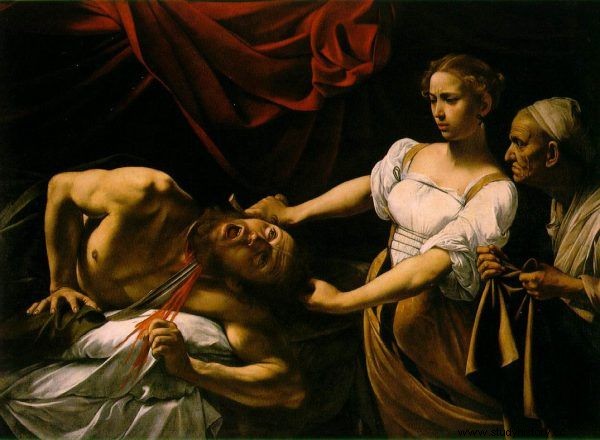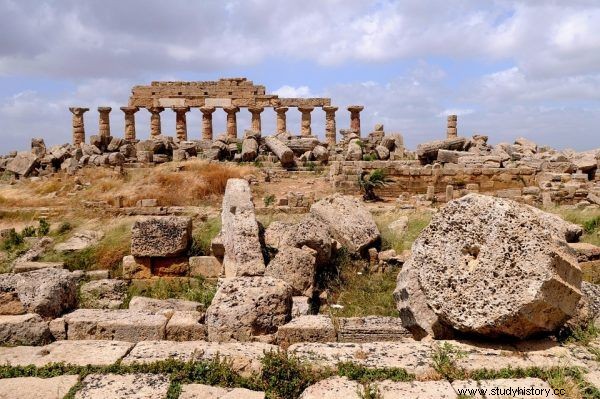A picture worth $ 30 million, five kilos of cocaine and tens of thousands of green bills. And Cosa Nostra - because only its members can tell what happened to the painting considered to be one of the most sought-after works in the world.
Caravaggio (1571-1610) is a great painter of the Italian Baroque, a master of drama, sharp chiaroscuro and "religious realism", who painted the Apostles with dirty legs and saints with disheveled hair. His paintings adorn the Louvre, London's National Gallery, the Vatican Museums ...
Though he came from a stately family of Milan who worked for the Sforza princely family, he was not an innocent man. He took part in brawls and drunks, took advantage of the paid love of prostitutes or teenage thieves in port. Finally, in May 1606, a real tragedy occurred:he killed, probably by accident, a man named Ranuccio Tomassoni under unclear circumstances.
This is where the story begins, which could become the canvas for a brilliant thriller in which art is mixed with crime and mystery - such as the new novel "444" by Maciej Siembieda , in which "The Baptism of Władysław Warneńczyk", inaccessible to the public, hides a secret on which the fate of the world depends. Caravaggio's oeuvre also includes a work that no one can admire at a museum exhibition.

Caravaggio in the portrait by Ottavio Leoni.
The killer painter flees to Sicily
The mighty patrons who had previously made the artist a brilliant career in Rome now could do nothing:Caravaggio, as a murderer, had to flee. First to Naples, and then to Malta, where ... he became a knight of Saint John and the Order's court painter. Apparently, he was characterized by extraordinary piety then, and he felt belonging to the congregation as a great honor.
The idyll did not last too long:at the end of August 1608, there was another row during which the painter severely beat his brother. Rage attacks may have been a lead poisoning syndrome, which was then used to make paints. Consequently, Caravaggio, "as a hideous and rotten man", was expelled.
Perhaps on the advice of an old comrade, Maria Minniti, who married in Syracuse, the artist went to Sicily, an eternally rebellious island. There, according to tradition, the first mafiosi appeared in the 13th century, when they allegedly took revenge on the French invaders for raping a local girl. The road led Caravaggio from Syracuse via Messina to Palermo.

The idyllic landscapes of Sicily soon brought the accursed painter to rest.
Here, it would seem, the situation was beginning to stabilize. Caravaggio was winning new contractors. One of them, a wealthy merchant Fabio Nuti, commissioned the artist to paint a Christmas scene, in which, apart from the Holy Family, also St. Lawrence and St. Francis of Assisi.
The only such Christmas
A work of considerable size is created:268 by 197 centimeters. The artist placed Maria in the center of the composition. A young woman with quite plebeian features half-lying, half-sitting, with her right hand on her stomach; she pays no attention to the shirt that slips off her shoulder. She is clearly tired of giving birth. The baby also remains motionless, as if surprised by the fact of its own birth. With his back to the viewer, the gray-haired St. Józef was most likely a midwife a moment ago, he did not even manage to put his clothes in order, still revealing stringy, pale legs.
Two saints, Lawrence in an elegant deacon robe and Franciszek in a simple habit, remain silent in prayer, trying to disturb their parents as little as possible. In fact, anxiety is introduced only by an energetic angel who rushes down to earth in a violent flight to show little Jesus to heaven.

Christmas with Saints Lawrence and Francis. Reproduction of a famous painting.

The article was inspired by the new book by Maciej Siembieda "444" (Wielka Litera Publishing House 2017).
It is perhaps not the most spectacular work of the artist, it is difficult to compare it with the dramatic, painted with panache "Judith cutting off the head of Holofernes" (Galleria Nationale d'Arte Antica, Rome). But in the Palermian scene of "Christmas" there is clearly something that makes Caravaggio's work so special:deep empathy, a sense of the tragic human destiny.
Most likely, the artist completed work on this painting in 1609. Soon after, he had to run away again. Probably too many "made" enemies on the island. He decided that it would be safer to wait in Naples for papal pardon. There, an unknown assassin massacred his face. When the longed-for document finally arrived in the summer of 1610, Caravaggio immediately set off for Rome. He died on the way, in Porto Ercole, Tuscany, under circumstances that were not fully explained.
The repentant mafiosi testify
His "Christmas with Saints Lawrence and Francis" remained in Palermo. In 1969, the faithful and tourists who entered the San Lorenzo oratory there, could admire the painting freshly after the completion of restoration work. However, they did not enjoy it for long: on the night of October 17-18, the painting was cut out of its frames and carried away. Investigators only managed to establish that the Sicilian mafia was behind the theft . The silence lasted until the 1980s.

"A Judith cutting off the head of Holofernes"
A contrite Mafia named Vincenzo La Piana was the first to speak. He testified that when the painting failed to sell on the black market, the prominent drug dealer Gerlando Alberti (privately the witness's grandfather) had it buried in an iron box along with five kilograms of cocaine and several million dollars on a farm near Palermo. The area was thoroughly searched. To no avail.
In 1980, Peter Watson, an outstanding British art historian and then also a prominent journalist, received an unofficial offer to buy a painting from the San Lorenzo Oratory. He made an appointment with a contractor in Laviano, which, however, did not happen due to ... a powerful earthquake that claimed almost three thousand lives on November 23.
The earthquake breaks the trail
The case was quiet again - until 1992. Then, there was a successful attack on the famous investigating judge Giovanni Falcone (if only because of the popular series, also broadcast on Polish Television). The same who previously discovered the backstage of the great war of mafia clans and revealed the links between organized crime and the world of business and politics. One of the criminals involved in this murder boasted publicly at the time that the painting was still in the possession of Cosa Nostra and was ceremonially displayed during the secret meetings of Cupoli, the Sicilian Mafia commission, established in 1957 during the meeting of Italian and American mafiosos in the Wagner Hall of the Palermian Grand Hotel des Palmes. Was he lying, fantasizing, was he telling the truth? It is not known.

Is the $ 30 million painting still in Sicily?
In any case, the issue of Caravaggio also reappeared during the many years of the trial of Giulio Andreotti (which lasted from 1992 to 1999 and ended with an acquittal), the Italian prime minister accused of contacts with the mafia and corruption. And later also for the murder. One of the Crown witnesses claimed that he personally cut the painting out of the frames with a razor blade and rolled it up. He didn't sound particularly credible:he was wrong about places, dates, circumstances ... But who knows, maybe he was telling the truth?
In 2009, yet another lead led investigators looking for the painting to one of the Sicilian clans, the Pullarà family. Cosa Nostra's bosses were to give her Christmas in the late 1980s for safekeeping. Unfortunately, the Pullards did not recognize the value of the deposit and hid it ... in a cowshed where it was reportedly eaten by rats and pigs. They also testified that the remaining remnants ... were composted. If that were true, the destruction of the painting would turn out to be not only a great material loss, but also a terrible, tragic metaphor, in line with the fate weighing upon the great Caravaggio.
However, there is hope:it is given by the testimonies of those who claim that in the late 90s they saw the work at Cupola, closed from nosy meetings. What about the rest of the non-mafia fans of the baroque artist? Well ... for some time in Palermo we can see a very exact copy of the painting, made with the help of the latest technologies by the company Factum Arte. But what of it?
Bibliography:
- M. Cuppone, La Natività di Palermo:un capolavoro del 1600 o del 1609, news-art.it.
- Il Caravaggio rubato, LaRepubblica.it.
Buy the book at empik.com

